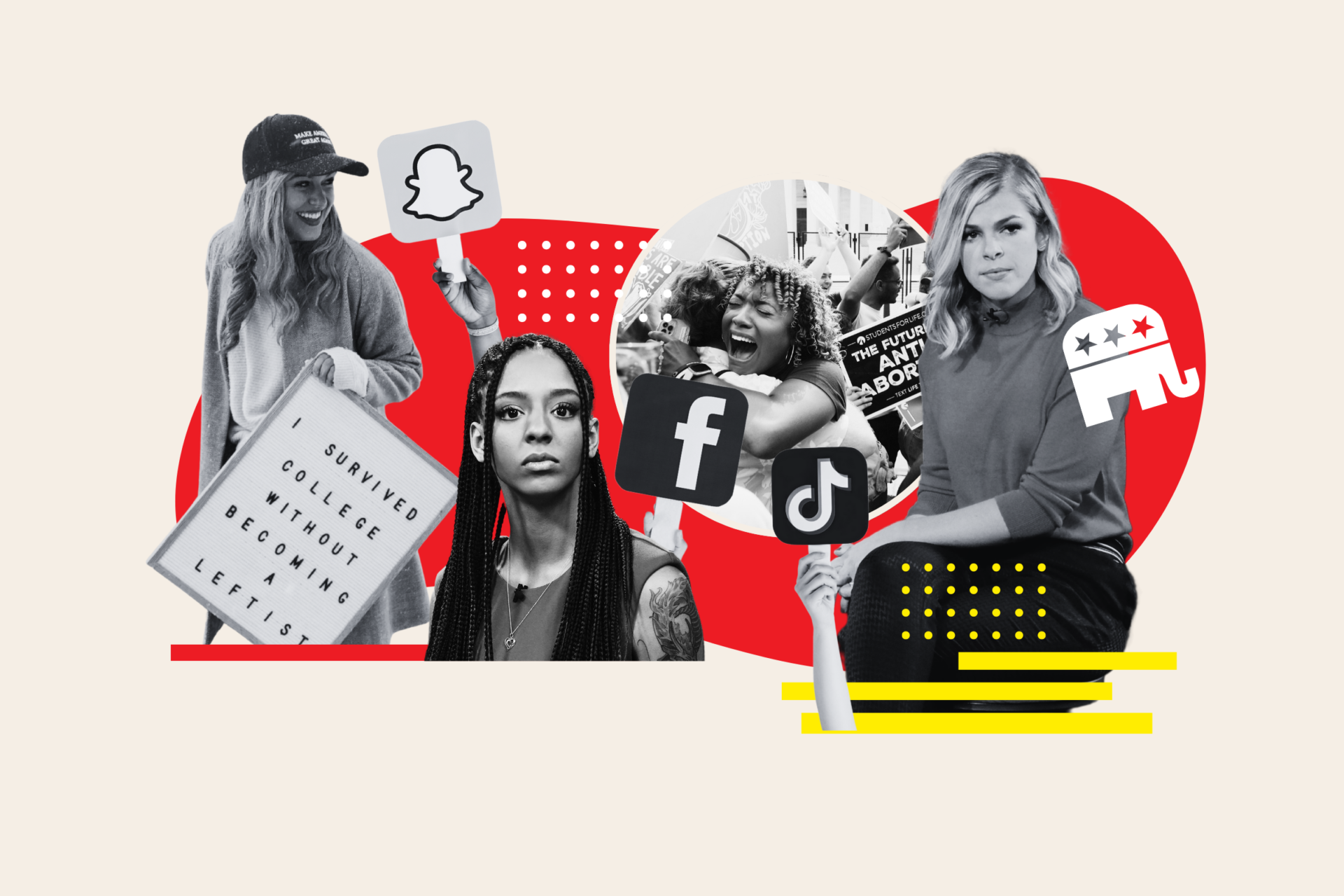In the digital age, feminism no longer unfolds only through manifestos or marches but it also scrolls through Instagram reels, YouTube vlogs, and TikTok trends. This convergence of postfeminism and influence culture has created a new terrain where empowerment, visibility, and consumption are tightly interwoven. Postfeminism presents feminism as a personal lifestyle choice rather than a collective political project, while influence culture transforms visibility into capital.
This essay critically examines how postfeminism operates within influence culture. It shows how digital platforms reproduce and rebrand patriarchal norms through the illusion of choice. Moreover, it also considers how emerging social-media trends like the “princess treatment” and “bare minimum” discourses illustrate women’s ongoing negotiation between empowerment and dependency within neoliberal femininity.
Post Feminism as a Cultural Logic
To understand the gender politics of digital culture, it is essential to unpack post-feminism not as a single moment after feminism but as a pervasive cultural logic that shapes how empowerment, beauty, and choice are imagined.
Angela McRobbie (2004) conceptualizes post-feminism as a double entanglement: a process through which feminist ideals are simultaneously acknowledged and undone. In her view, feminism is “taken into account” only to be declared obsolete by allowing the reinstallation of traditional gender norms under the guise of personal freedom.
The popular culture of the late 1990s and early 2000s, from Bridget Jones’s Diary to Sex and the City, epitomized this tension. Because women were portrayed as independent and sexually confident, yet persistently anxious about aging, beauty, and heterosexual success. As McRobbie argues, these narratives produce a new “gender regime” in which freedom and self-regulation coexist. In this sense, the language of choice becomes the very mechanism of control.
Read More: The Debate of Imported Versus Indigenous in Women’s Rights Movements
Additionally, Rosalind Gill (2007) builds on this foundation but reorients the analysis from backlash to sensibility. She defines postfeminism as a patterned set of discourses that link empowerment to consumption and bodily discipline. In this postfeminist sensibility, femininity is treated as a bodily property; the self is endlessly monitored and made over through confidence culture, self-surveillance, and the internalization of the gaze. Gill highlights how neoliberal values of individualism, self-management, and entrepreneurialism merge seamlessly with this gendered script. This notion constructs women as ideal neoliberal subjects who must continuously “choose,” “work on,” and “rebrand” themselves.
Therefore, this transition from collective politics to personal branding marks a deeper cultural shift. Now empowerment becomes an aesthetic performance rather than a social demand. As Gill and McRobbie both note, the feminist subject is not erased but repackaged as thry are invited to perform autonomy while being disciplined by market logic.
This logic extends powerfully into the digital era. Influencer culture transforms Gill’s postfeminist sensibility into an algorithmic practice. The body, once a site of resistance, now functions as a digital brand asset which is curated through filters, captions, and commercial partnerships. McRobbie’s “ethic of freedom” has evolved into what could be called an aesthetic of authenticity, where visibility equates to value. Hence, under the gloss of confidence and self-care, young women are encouraged to monetize their desirability and package their emotions as content.
From Feminist Politics to Influencer Aesthetics
Building upon this postfeminist framework, influence culture emerges as the economic and visual extension of neoliberal femininity. As Sarah Banet-Weiser (2018) explains, social-media platforms create a marketplace where empowerment becomes a visible commodity. Female influencers, especially in beauty, lifestyle, and wellness, translate emotional authenticity into profit, turning self-expression into labor. Their empowerment narratives (“I built my brand,” “I turned my trauma into strength”) mirror the postfeminist ideal of self-made success.
Yet this form of visibility is deeply structured by capitalism and patriarchy. Amy Shields Dobson (2015) argues that the supposed “authenticity” of digital self-representation often reinforces normative femininities rather than challenging them. Even as women gain platforms, they are rewarded for reproducing idealized beauty, confidence, and positivity which are the qualities that align perfectly with consumer culture. Hence, influence culture converts the feminist demand for voice into an algorithmic demand for performance.
In this environment, empowerment becomes something to be displayed and consumed. The influencer’s labor is aesthetic and emotional: she must be relatable yet aspirational, confident yet non-threatening. Through this dynamic, everyday digital practices like hashtags, morning routines, or “get ready with me” videos can transform into performances of gendered confidence optimized for visibility.
Princess Treatment and the “Bare Minimum” Trend: New Languages of Desire and Disillusion
Among the many digital expressions of femininity today, trend like the “princess treatment”that romanticizes being pampered as proof of self-worth is not a trivial fad but embodiment of postfeminist contradictions. It recasts dependence as choice and minimal effort as empowerment that echoes Gill’s warning that postfeminism “reprivatises” what feminism once politicized. Thus, postfeminism operates less as a rejection of feminism and more as its neoliberal mutation. It appropriates the vocabulary of empowerment while erasing the politics of inequality, inviting women to perform freedom through consumption, discipline, and visibility.
On TikTok and Instagram, women share clips of being pampered like luxury dinners, “soft life” aesthetics, or partners buying gifts and opening doors by framing indulgence as a marker of empowerment. At first glance, this performance seems to reclaim pleasure as a feminist right, celebrating the idea that women deserve rest and romantic effort. Yet beneath the glittering visuals, this narrative re-centers heteronormative dependency under the language of self-care and choice.
Read More: How Anti-Gender Backlash Is Reshaping Feminist Activism in Pakistan
As Diane Negra (2009) describes through her concept of “postfeminist retreatism,” women are invited to find fulfillment not through collective struggle but through comfort and romance. The princess treatment becomes a digital fantasy that translates neoliberal femininity into emotional luxury: empowerment is no longer about dismantling structures but about attracting the “right” kind of care within them. It reflects Gill’s postfeminist sensibility, where women’s agency is framed as personal choice, even when that choice reproduces dependence.
This phenomenon also mirrors the gendered aesthetics of confidence culture (Gill & Orgad, 2018). Women are encouraged to project self-assurance, yet that confidence must appear effortless, beautiful, and non-threatening. The princess, then, is the perfect postfeminist subject: confident but compliant, independent but desirably dependent, self-loving yet always available for admiration. It transforms care into spectacle and agency into desirability.
In contrast, the “bare minimum” trend, where women humorously critique men who do the least (“he texted back once and now he’s emotionally mature”), reveals the exhaustion beneath postfeminist optimism. These viral jokes mark a collective recognition that the promise of equality has not been fulfilled. They function as micro-resistance (Banet-Weiser, 2023), expressing fatigue with a culture that commodifies romance, self-worth, and emotional labor. Humor becomes a coping mechanism in a way to voice frustration while still remaining digestible to the algorithm.
However, as Banet-Weiser (2018) and Gill (2022) caution, critique online often risks becoming content rather than confrontation. Irony substitutes for revolution: women articulate disillusionment, but within the same platforms and aesthetics that sustain their inequality. The bare minimum trend, while politically sharp, still circulates through neoliberal logics of branding and engagement. It exposes frustration yet depends on it as each post is translating disappointment into marketable affect.
Together, these two trends reveal the emotional architecture of postfeminism. They show how digital femininity oscillates between pleasure and exhaustion, self-care and self-exposure, irony and aspiration. The postfeminist subject must not only perform empowerment but do so beautifully, humorously, and profitably. Dobson (2015) calls this the “aesthetic labor of empowerment”, the constant work of turning affect into aesthetic and critique into performance. Influence culture thus becomes a new romantic economy: women curate themselves as both desiring and desirable, both aware and complicit. What emerges is a new emotional contract between feminism and neoliberalism, where visibility is mistaken for liberation and irony for resistance.
Ultimately, these trends do not mark a failure of feminism but reveal the complexity of living feminism within capitalism. They dramatize the tension between wanting care and rejecting submission, between knowing the system is unfair yet performing within it to survive. The postfeminist woman online becomes both symptom and strategist by negotiating freedom through aesthetics in a world that still measures her worth by how softly she speaks and how beautifully she resists.
Moreover, despite its entanglement with neoliberalism, influence culture also opens new feminist possibilities. Hashtags such as #MeToo, #BodyPositivity, and #PayGap shows that social media can amplify marginalized voices and challenge mainstream silences. Here, visibility becomes a tool of resistance rather than conformity.
Feminist digital cultures must move from individual branding toward shared presence, from curated aesthetics toward relational ethics. Instead of competing for attention, online feminist communities can cultivate care economies which are the networks grounded in empathy, transparency, and mutual support rather than algorithmic reward.

Noor ul Sabah
Noor ul Sabah is a feminist researcher focused on intersectional approaches to gender, technology, and governance. Her work explores how power and identity shape experiences of violence, migration, and citizenship.



